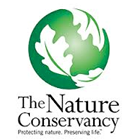
Discover The Nature Conservancy
The Nature Conservancy is the leading conservation organization working around the world to protect ecologically important lands and waters for nature and people.
They address the most pressing conservation threats at the largest scale. Thanks to the support of more than 1 million members, they've built a tremendous record of success since their founding in 1951.
The Nature Conservancy works towards its mission through the dedicated efforts of their diverse staff, including more than 550 scientists, located in all 50 U.S. states and 33 countries. Also, with the help of their many partners, from individuals and governments to local nonprofits and corporations and by using a non-confrontational, collaborative approach and staying true to our five unique core values.
The Nature Conservancy works in all 50 states and in over 30 countries around the world to preserve the animals, plants and natural communities that represent the diversity of life on Earth. They use science to determine where they work and with whom they partner to protect nature for the future.
They protect habitats, address urgent issues, serve local indigenous people, and work with companies to protect and preserve nature and its habitats.
Mission Statement
The mission of The Nature Conservancy is to conserve the lands and waters on which all life depends.
How do we achieve this mission?
- Through the dedicated efforts of our diverse staff, including more than 550 scientists, located in all 50 U.S. states and 33 countries.
- With the help of our many partners, from individuals and governments to local nonprofits and corporations.
- By using a non-confrontational, collaborative approach and staying true to our five unique core values.
That’s how The Nature Conservancy has done more than anyone else to advance conservation around the world since our founding in 1951.
Vision Statement
The vision is to leave a sustainable world for future generations.
Today’s society faces unprecedented challenges. Dwindling natural resources, declining economies, a rapidly changing climate and other threats require that all of us begin working together to reach common solutions.
More than ever before, we must find innovative ways to ensure that nature can continue to provide the food, clean water, energy and other services our growing population depends upon for survival.
Now is a time of opportunity. A time to move conservation from the sidelines of global priorities to the center of the world stage—because human wellbeing depends on a healthy, diverse environment.